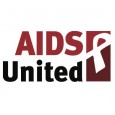It has been over a week since the Trump administration’s Ending the HIV Epidemic plan was unveiled in the wake of President Trump’s unexpected pledge to “defeat AIDS in America” during his State of the Union address, but a great deal of uncertainty over the size, design, and efficacy of the plan remains among those in the HIV advocacy community.
While seemingly well-intentioned and potentially a boon to efforts to reduce HIV incidence and increase access to HIV treatment, there are currently too few details available around the Trump administration’s plan to end the HIV epidemic to garner significant buy-in and trust from HIV advocates who have spent the last two years fighting against the Administration’s attacks on the health care and basic human rights of people living with HIV. Achieving the goals that have been set out by Health and Human Services Secretary Alex Azar will take a wholesale change to the Trump administration’s health care policy. It will also require a substantial amount of new funding for HIV treatment, prevention and research, as well as additional funding for programs address the housing needs and food insecurity of people living with HIV.
Right now, there is still a good deal of uncertainty around how much money the Trump administration is going to ask Congress to provide for HIV programming in their Fiscal Year 2020 budget. On a conference call last Friday, HHS Assistant Secretary for Health Brett Giroir said that the Trump administration would be devoting “significant new resources” to CDC and the Ryan White program, particularly in the first year of the plan.
While the Administration has not officially provided any concrete funding details, a Politico article released over the weekend cited several unnamed Administration officials as putting the amount of new funding at roughly $250 million, most of which would go to the Centers for Disease Control (CDC) and the Ryan White HIV/AIDS Program. The current combined budgets for HIV Prevention at the CDC and the Ryan White program sit at about $3.14 billion.
According to the Administration, the new influx of HIV funding would be used for targeted investment among 48 U.S. counties, Washington, DC, and San Juan, Puerto Rico which contain more than half of newly diagnosed HIV cases, along with a group of seven states where HIV incidence is particularly high rural areas. Ultimately, the Administration hopes to see a 75% reduction in new HIV infections over five years and a 90% reduction over 10 years.
In many ways, the Trump administration’s Ending the HIV Epidemic plan is similar to the community-driven roadmap to end the HIV epidemic in the U.S. by 2025 that was developed by AIDS United and the Act Now: End AIDS coalition and endorsed by over 250 HIV service organizations. However, none of the lofty goals that were put forth in the Administration’s plan can be achieved without a radical policy overhaul on health care, civil rights, and immigration.
$250 million cannot begin to repair the damage done to people living with HIV through the Trump administration’s attacks on Medicaid expansion and Affordable Care Act protections for people living with pre-existing conditions, or their harmful proposed rule changes to Medicare Part D and Public Charge that would take away access to HIV medications for seniors on Medicare and impose a de facto HIV ban and financial litmus test on immigrants coming to the United States respectively. $250 million will not undo this Administration’s blatant discrimination against LGBTQ+ communities and communities of color.
To a certain extent, there are those within the Administration who recognize the profound distrust that exists between people living with and affected by HIV in the United States and the federal government and acknowledge that the responsibility for mending that gap lies with them. Repeatedly during Friday’s conference call, Assistant Secretary of Health Giroir said that the Trump administration would be taking a “whole of government and whole of society approach” to ending the HIV epidemic and that the administration, “care[s] only about people who have the infection, have the disease, or are at risk.” It is unclear whether these views on the treatment of LGBTQ+ individuals, immigrants, people of color and other disproportionately impacted groups would be shared by others within the Trump administration or if they would be confined to those working on the Ending the HIV Epidemic plan.
Check back frequently with AIDS United’s Policy Update for all the latest on the Trump administration’s Ending the HIV Epidemic plan.








Comments
Comments